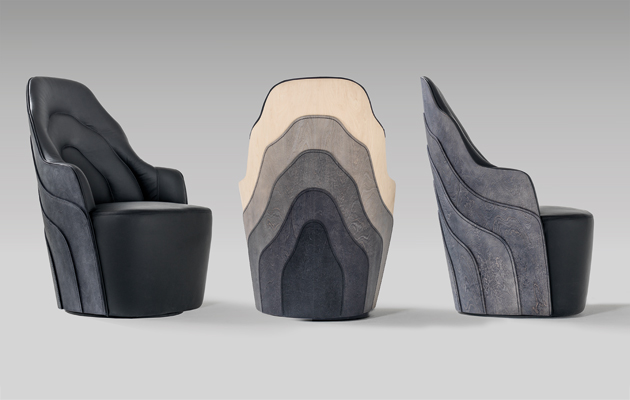|
|
||
|
BD Barcelona, which this week opened its first London showroom, took a gamble on the Swedish duo’s experiment in ‘extreme sewing’ D Barcelona was remarkably relaxed when it took the risk of buying several new pieces of equipment to manufacture a design that many dismissed as crazy. But the Spanish brand, which opened its first London showroom during Clerkenwell Design Week this week, has never been one to shy away from an unconventional idea. Boasting a collection that includes items by such radicals as Salvador Dalí and Antoni Gaudí, part of its mission statement since its founding in 1972 has been to ‘cultivate beauty, in some cases above function’. That’s not to say Fredrik Färg and Emma Marga Blanche’s Couture armchair isn’t functional – it’s just that, like their previous attempts at ‘baking furniture’, the process of making it was somewhat experimental. After three years, and many broken machines, the Swedish duo developed a technique that it calls ‘wood tailoring’ or ‘extreme sewing for furniture’. ‘We use a sewing machine to drill directly into wood,’ Blanche explains. The result is a chair with layers of thick plywood stitched together to form topographical contours, giving it the appearance of an ageing tree trunk. Available in a gradient from natural to dark grey, or in a charcoal grey, the design could be developed in future using coloured stains and stitching, or perhaps even oak or walnut. ‘We’re pushing the boundaries of what you can do with materials, both in terms of industrial design and craft,’ Färg says. ‘Sewing is normally done by hand, but that’s not always visible. We talked a lot about how we could show the stitching, as well as use it for the construction.’ Färg and Blanche picture the chair in settings such as hotel lobbies, but point to BD Barcelona’s history of producing one-off, sculptural items for private homes as another option. For now, Couture joins designs by Jaime Hayon, the Campanas and Konstantin Grcic in BD’s main portfolio. |
Words Debika Ray
Above: Layers of thick plywood are stitched together to form topographical contours |
|
|
||




















